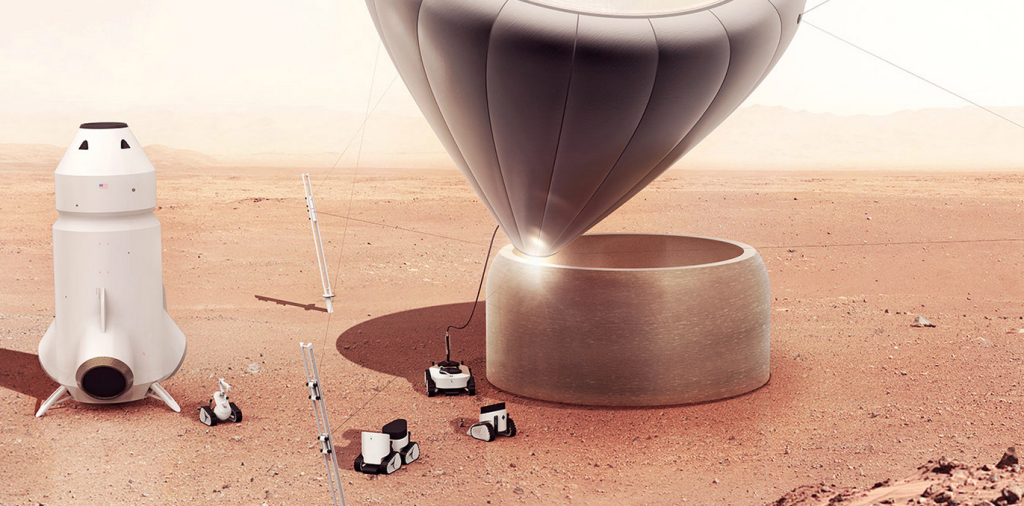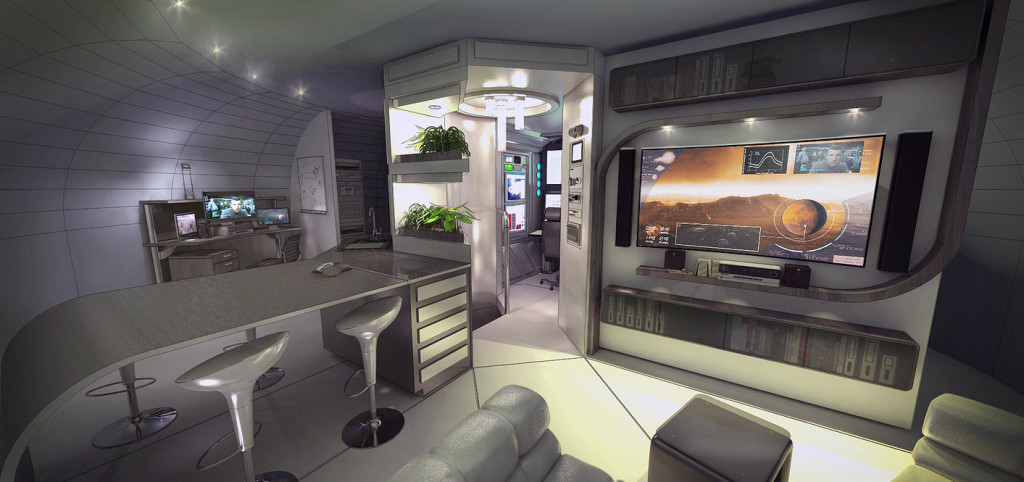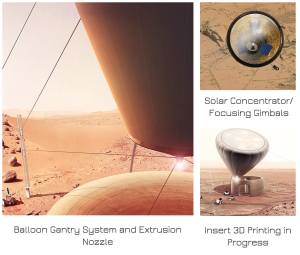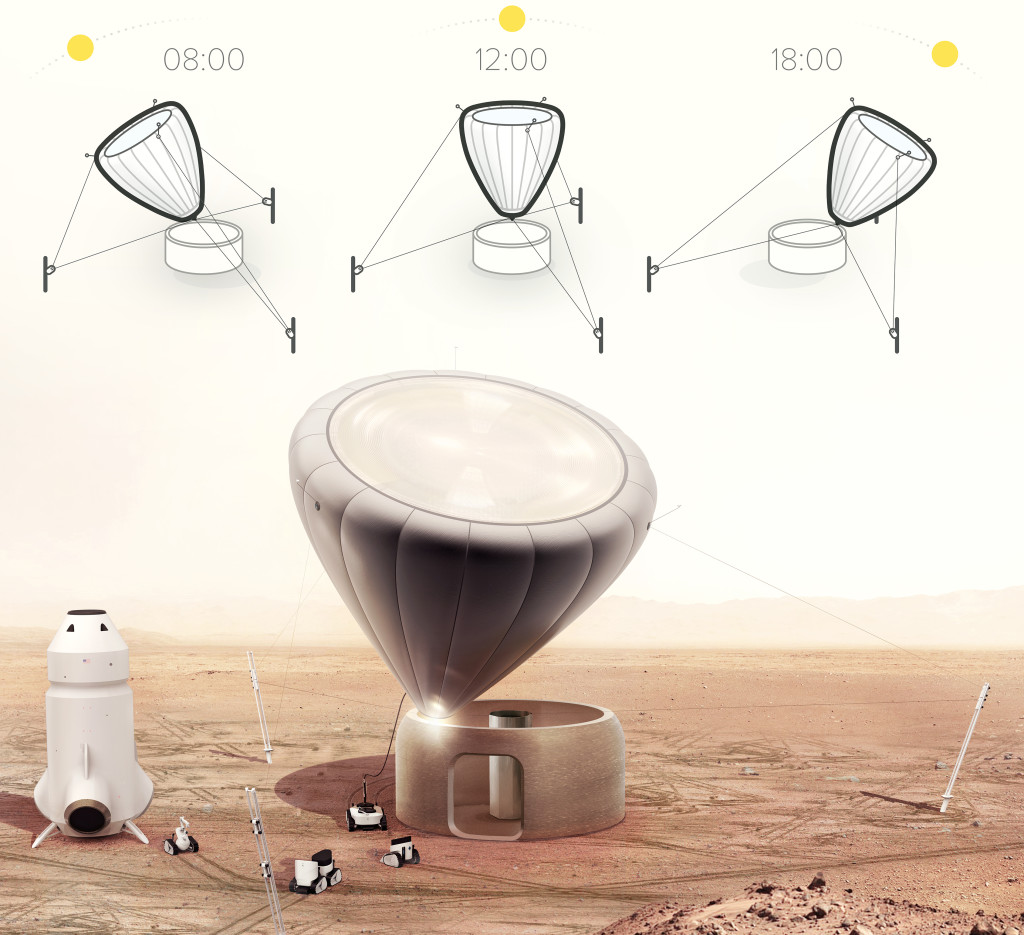 Last May when NASA announced their new Centennial Challenge and tasked entrants to design a system for developing 3D printable habitats on the surface of Mars everyone knew that the competition would be fierce. But dozens of teams took up the challenge, some that were not even eligible to enter, and in barely four months the first phase of the challenge has ended with over two dozen viable finalists. With the finalists selected, the second phase of the competition begins at this weekend’s NYC Maker Faire, September 26-27, where the selected finalists for the next phase will need to try to develop their concepts in a real world environment.
Last May when NASA announced their new Centennial Challenge and tasked entrants to design a system for developing 3D printable habitats on the surface of Mars everyone knew that the competition would be fierce. But dozens of teams took up the challenge, some that were not even eligible to enter, and in barely four months the first phase of the challenge has ended with over two dozen viable finalists. With the finalists selected, the second phase of the competition begins at this weekend’s NYC Maker Faire, September 26-27, where the selected finalists for the next phase will need to try to develop their concepts in a real world environment.
While all of the finalists are pretty spectacular ideas, one of my favorites is the entry by the Solar Crafting team that uses a balloon-driven Solar Sintering to construct livable habitat pods constructed from local surface material. And while the idea of using a balloon to 3D print a habitat sounds weird, the science behind it is actually rather sound and quite clever. The balloon not only collects solar power that can be converting into the sintering beam, but it supports the weight of the printer itself and reduces its mass by an estimated 90%. The Solar Crafting process will completely eliminate the need for NASA to send any building materials to Mars, creating an entire colony of surface habitats (SHAB) made by sunlight and the materials found in the abundant local sand.
Multi-purpose MissionBots get things started by clearing the construction zone of any debris or material that will interfere with the process. Once everything is in order, they secure the telescoping controllers and help setup the next robot. The LassoBots will control the balloon gantry system as well as regulate the size and concentration of its focusing-lens while a group of Mining Bots collect and sort suitable building materials. In this case iron and quartz rich sand will be delivered to the real workhorse of the operation, the R2RP robots. The Regolith-to-Resin-Processors take the raw sand, process it into the resin 3D printing material and deliver it to the printing tray for sintering. This system allows a continuous feed of materials to the Surface Habitat Printer (SHAB Printer), making the number of buildings capable of being made limited only to the amount of raw material available on the surface.
The Solar Crafting 3D printing process works by combining two popular industrial 3D printing applications, Selective Laser Sintering (SLS) and the large scale Contour Crafting construction process. The large balloon collects sunlight and transforms it into a highly concentrated solar energy beam that will sinter the printing materials into a solid object, layer by layer. Like the SLS process, the Martian sand is deposited into a very fine layer as the sunlight beam prints the shape. The melted sand is quickly cooled by the surface temperatures of Mars, which will help speed up the process. Using a process similar to the one used by Contour Crafting to 3D print homes, the Solar Crafting process is capable of easily printing full-sized, livable SHAB structures.
The SHAB itself is made using hybrid architecture comprised of three individual elements, a freestanding Exterior Dome (ED), a rigid cylinder-shaped Central Module (CM) core and an inflatable Living Space Module (LSM). The ED is constructed entirely of local materials and will act as durable protection from the surface conditions on Mars. The CM is a solid core partially constructed from the Martian sand that grants access to the rest of the SHAB. And the LSM is the customizable module that will act as the settlers uncontaminated, pressurized living space.
“The SHAB interior was designed to be reminiscent of the astronaut’s Earthly dwellings, offering a psychological retreat from the harshness of the Martian environment. The color and material palette uses curved, organic themes to compliment central placement of plants and natural light baffles around the habitat core,” explains the Solar Crafting team on their project website.
 Rather than requiring a large, heavy scaffolding system that would be difficult to send to Mars, the weight of the Solar Crafting printing gantry and extruder will be supported almost entirely by the 150 ft long by 90 ft in diameter balloon. Because there is no complicated support structure, the Solar Crafting process is extremely scalable. In order to build structures larger than the basic SHAB, the SHAB Printer only needs a larger system of cables, something that early settlers can easily retrofit the device with once the first round of habitats are finished. That gives any inhabitants of the living site total control over their settlement and allows them the freedom to modify and customize it entirely for their specific needs without requiring further equipment deliveries from earth.
Rather than requiring a large, heavy scaffolding system that would be difficult to send to Mars, the weight of the Solar Crafting printing gantry and extruder will be supported almost entirely by the 150 ft long by 90 ft in diameter balloon. Because there is no complicated support structure, the Solar Crafting process is extremely scalable. In order to build structures larger than the basic SHAB, the SHAB Printer only needs a larger system of cables, something that early settlers can easily retrofit the device with once the first round of habitats are finished. That gives any inhabitants of the living site total control over their settlement and allows them the freedom to modify and customize it entirely for their specific needs without requiring further equipment deliveries from earth.
If the Solar Crafting process sounds amazing, that’s probably because it is. It is not a surprise to me that NASA selected it as a finalist because it combines two things that NASA loves, it is mostly hands off and automated as well as a clever solution to a difficult to solve problem. Solar Crafting gives any Mars settlements nearly Earth-free autonomy when it comes to constructing, maintaining and customizing their settlement and by using a balloon to hold the weight 3D printer, it offers a clever solution to the logistical problem of having limited space to ship supplies to Mars. And believe it or not, this is only one of 28 amazing possible solutions to building a habitat on the Red Planet. The Martian may be a fictional story now, but very soon the manned mission to Mars will be the stuff of history books. What are your thoughts on this innovative methods of 3D printing on Mars? Let us know in the Solar Crafting Forum thread on 3DPB.com.
What are your thoughts on this innovative methods of 3D printing on Mars? Let us know in the Solar Crafting Forum thread on 3DPB.com.
Subscribe to Our Email Newsletter
Stay up-to-date on all the latest news from the 3D printing industry and receive information and offers from third party vendors.
You May Also Like
Air Force Awards Fortius Metals $1.25M to Qualify 3D Printing Wire for Hypersonic Applications
AFWERX, part of the US Air Force Research Laboratory (AFRL), awarded a Direct-to-Phase II Small Business Innovation Research (SBIR) contract worth $1.25 million to Colorado’s Fortius Metals, to accelerate qualification...
US Air Force Awards JuggerBot $4M for Large-format Hybrid 3D Printing
Large-format 3D printer manufacturer JuggerBot has received a $4 million grant to develop a large format 3D printer, courtesy of the Under Secretary of Defense, Research and Engineering Manufacturing Technology...
Where Have All AM’s Unicorns Gone?
In the rapidly evolving world of 3D printing, startups valued at over a billion dollars, known as unicorns, once seemed as fantastical as the mythical creatures themselves. While a few...
How My Childhood Fascination with Planes Led to Investing in 3D Printing
My fascination with aerospace started young, and I started studying planes–identifying them in the sky and learning everything I could about how they work. Fast forward to my first week...































